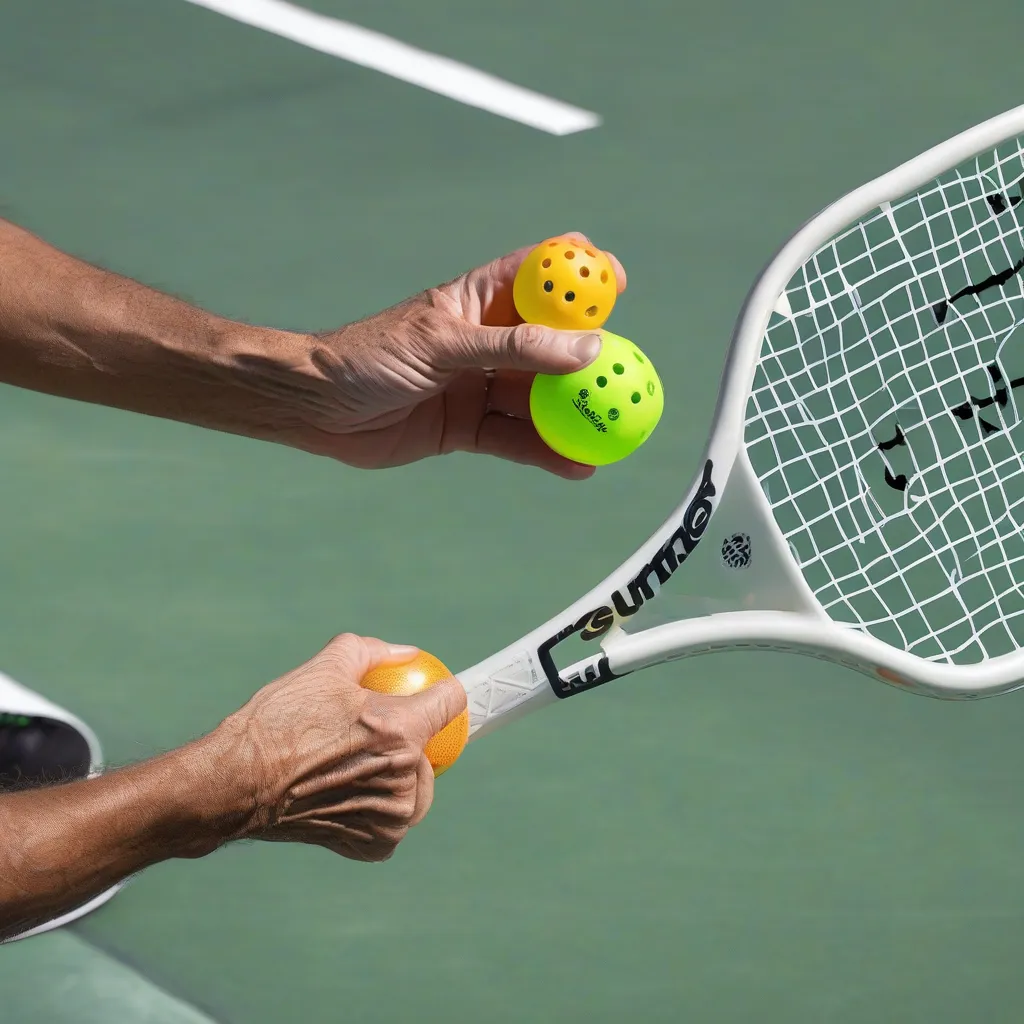Table of Contents
Introduction to Basic Pickleball Techniques
Pickleball is a rapidly growing sport that combines elements of tennis, badminton, and table tennis. To excel in this exciting game, it’s essential to master the basic Pickleball techniques. Whether you’re a beginner or looking to refine your skills, understanding these fundamental techniques will significantly improve your performance on the court. This guide covers seven proven tips to help you master the basic Pickleball techniques and take your game to the next level.
Mastering the Grip
The foundation of all great Pickleball shots starts with the proper grip. There are two main grips used in Pickleball: the Continental grip and the Eastern grip. The Continental grip, also known as the “hammer” grip, is versatile and suitable for most shots. To achieve this grip, hold the paddle as if you were shaking hands with it. The Eastern grip is more suited for forehand strokes and offers greater control. Experiment with both grips to find which one feels more comfortable and gives you the best control over the paddle. Mastering the grip is a crucial aspect of basic Pickleball techniques.
 Pickleball Grip Techniques
Pickleball Grip Techniques
Perfecting Your Stance and Footwork
Good stance and footwork are vital for executing effective shots and maintaining balance. Stand with your feet shoulder-width apart, knees slightly bent, and weight evenly distributed on the balls of your feet. This athletic stance allows for quick movements in any direction. Practice shuffling your feet instead of crossing them to maintain balance and avoid tripping. Proper stance and footwork form the backbone of basic Pickleball techniques.
Executing the Serve
The serve is one of the most important shots in Pickleball, as it starts the rally. A good serve can put your opponent on the defensive right from the start. There are two main types of serves: the underhand serve and the overhead serve. Beginners should focus on mastering the underhand serve, which involves swinging the paddle upward to make contact with the ball below the waist. Consistency and accuracy are key, so practice serving to different areas of the service court to keep your opponent guessing. Mastering the serve is a fundamental part of basic Pickleball techniques.
Developing Your Forehand and Backhand Strokes
Effective forehand and backhand strokes are essential for returning shots and keeping the rally going. The forehand stroke is performed with the dominant hand on the paddle, swinging from low to high. The backhand stroke, often more challenging, requires swinging the paddle across the body with either one or both hands. Practice these strokes regularly to build muscle memory and improve your shot accuracy. Developing strong forehand and backhand strokes is key to mastering basic Pickleball techniques.
Mastering the Dink Shot
The dink shot is a soft, controlled shot that lands just over the net in the non-volley zone, or “kitchen.” This shot is designed to force your opponent to hit upwards, giving you an advantage. To execute a dink shot, gently tap the ball with the paddle face open, ensuring a soft and controlled touch. Mastering the dink shot can disrupt your opponent’s rhythm and is an essential part of basic Pickleball techniques.
Improving Your Volley
Volleys are shots hit out of the air before the ball bounces. They are typically used when close to the net. Keep your paddle up and in front of you, ready to react quickly. Use a short, controlled motion to hit the ball, aiming to keep it low and forcing your opponent to hit upwards. Practicing volleys will enhance your reaction time and shot placement, making it a vital part of basic Pickleball techniques.
Enhancing Your Court Awareness
Good court awareness allows you to anticipate your opponent’s shots and position yourself effectively. Always keep an eye on the ball and your opponent’s paddle position. Move to the center of your side of the court after each shot to be ready for the next one. Communicate with your partner in doubles play to cover the court efficiently. Enhancing your court awareness is critical to mastering basic Pickleball techniques and improving your overall game.
Resources for Further Learning
To continue improving your Pickleball skills and knowledge, check out these valuable resources:
Conclusion
Mastering the basic Pickleball techniques is essential for improving your game and enjoying the sport to its fullest. By focusing on the seven proven tips outlined in this guide, you’ll be well on your way to becoming a skilled Pickleball player. Remember to practice regularly, stay patient, and have fun. With dedication and perseverance, you can master the basic Pickleball techniques and achieve success on the court.
Frequently Asked Questions
- What are the basic grips used in Pickleball? The two main grips are the Continental grip and the Eastern grip, each offering different advantages for various shots.
- How important is footwork in Pickleball? Proper footwork is crucial for balance, quick movements, and effective shot execution.
- What is the best way to improve my serve? Practice consistency and accuracy with the underhand serve, focusing on different areas of the service court.
- How can I improve my forehand and backhand strokes? Regular practice and building muscle memory are key to developing strong forehand and backhand strokes.
- What is a dink shot in Pickleball? A dink shot is a soft, controlled shot that lands just over the net in the non-volley zone, designed to disrupt the opponent’s rhythm.
- Why is court awareness important in Pickleball? Good court awareness helps you anticipate shots, position yourself effectively, and communicate with your partner in doubles play.